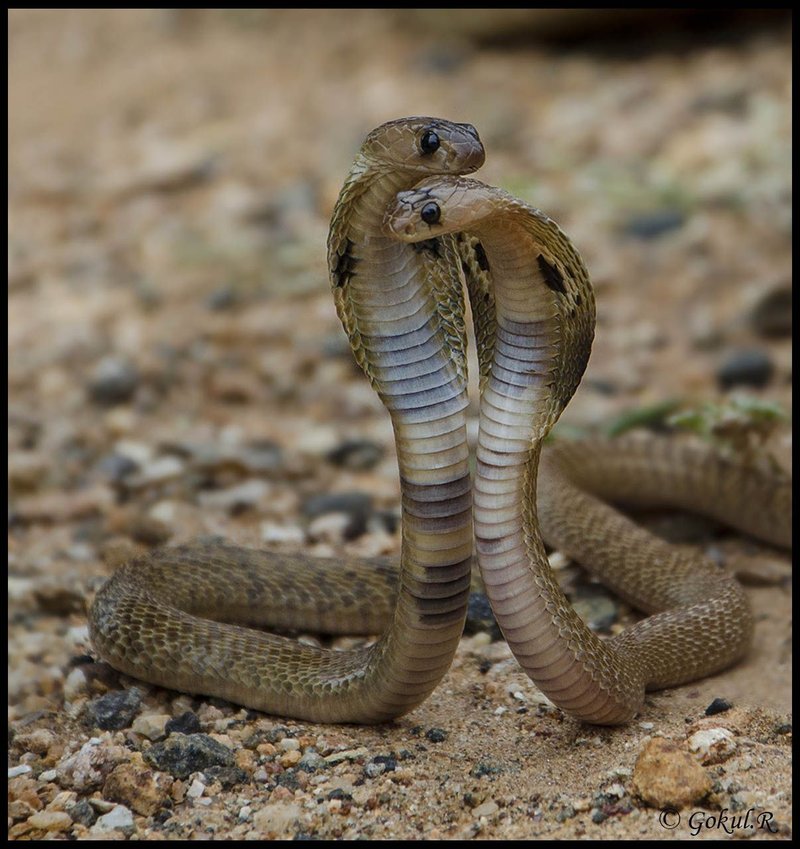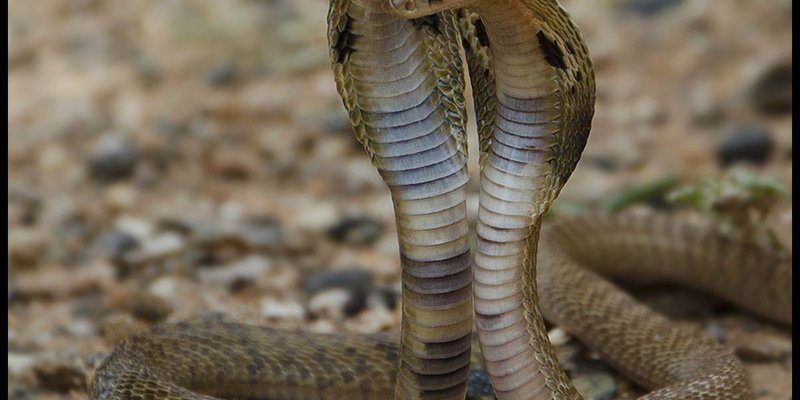
Imagine sitting in a café, chatting about the unique ways animals navigate their world. You might see a dog fetch a ball or a cat expertly stalk a toy, but what about a snake? Cobras, especially the Indian variety, exhibit remarkable cognitive abilities that might surprise you. They possess skills that help them thrive, even in challenging conditions. So, let’s dive into the brainy world of Indian cobras and discover what makes them tick—figuratively speaking, of course!
Understanding Cobra Intelligence
To grasp the intelligence of the Indian cobra, it’s essential to understand how we measure it. Unlike mammals, snakes don’t possess a highly evolved neocortex, the part of the brain associated with complex thinking. However, snakes, including the Indian cobra, have developed their own unique forms of intelligence.
These reptiles are adept at learning from their environment and experiences. For instance, they can remember locations of food sources and recognize patterns. This learning ability is crucial for their survival. When faced with danger, they also exhibit problem-solving skills, like finding ways to escape from potential threats effectively. Researchers believe that these behaviors indicate a level of cognitive function that, while different, is nonetheless impressive.
The Role of Environment in Cognitive Development
The environment plays a significant role in shaping the intelligence of an Indian cobra. In the wild, they reside in diverse habitats, from forests to agricultural lands. Depending on their surroundings, cobras adapt their behaviors to meet various challenges. This adaptability is a hallmark of intelligence. For instance, in urban areas, Indian cobras have learned to navigate human-made structures, finding shelter in gardens or even under vehicles.
Being resourceful is also a sign of intelligence. Cobras will use camouflage to blend into their surroundings, waiting patiently for prey. This strategy not only demonstrates their hunting skills but also highlights their ability to assess and respond to situations effectively. By adapting their behavior based on environmental cues, Indian cobras show that they can think critically about their circumstances.
Hunting Techniques and Behaviors
Hunting is where the Indian cobra’s intelligence truly shines. These snakes are ambush predators, which means they rely on stealth and strategy rather than sheer speed. They often remain motionless, waiting for the perfect moment to strike. This requires a keen sense of timing and awareness of their surroundings.
Interestingly, Indian cobras have a highly developed sense of smell, which they use to track prey. They flick their tongues to collect scent particles from the air, helping them pinpoint the location of potential meals. This unique hunting technique showcases their ability to combine sensory input with learned experiences. They can recall past encounters, recognizing which prey types are more plentiful or easier to catch.
The Importance of Social Learning
Social learning is another fascinating aspect of cobra behavior. While snakes are generally solitary, there’s evidence to suggest that they can learn from one another, especially in the context of hunting. For example, if one cobra discovers a successful hunting technique, others in the area may observe and replicate it. This ability to learn from others shows that Indian cobras can adapt their behaviors based on their experiences and the actions of their peers.
This dynamic also plays a vital role during mating season. Male cobras often engage in combat to win the favor of females. Observing these interactions helps younger snakes learn the intricacies of courtship and competition. Social learning, therefore, is a way for Indian cobras to navigate their often perilous environment with more sophistication.
Overcoming Threats and Learning from Experiences
Facing predators is a daily reality for Indian cobras. Their ability to recognize and respond to threats highlights their cognitive skills. When a cobra encounters danger, it can take various approaches—either displaying its impressive hood to intimidate or using its speed to escape. This quick decision-making process reflects their understanding of risk and reward.
Additionally, Indian cobras are known to adapt their behaviors based on prior experiences. If a snake has previously encountered a specific threat—like a human or a larger animal—it may change its response in future interactions. For example, if a cobra feels threatened by a human, it might choose to retreat rather than confront. This learned behavior illustrates their capacity for memory and adaptation, critical components of intelligence.
Why Understanding Cobra Behavior Matters
Recognizing the intelligence of Indian cobras isn’t just about curiosity; it has real-world implications. These snakes play crucial roles in their ecosystems, controlling pest populations and maintaining balance. Understanding their behaviors helps us appreciate their role in nature and can guide conservation efforts.
If we view cobras as more than just dangerous creatures, we can advocate for their protection and promote cohabitation strategies with humans. Instead of seeing them solely as threats, understanding their intelligence and behavior can change our perspective, leading to healthier ecosystems and safer communities.
The intelligence of the Indian cobra is a testament to the complexity of nature. They might not think like us, but their behaviors and adaptations reveal a thought process tailored to their lives. From their hunting strategies to their ability to learn from experiences, these snakes demonstrate a level of cognitive skill that’s both surprising and fascinating.
So next time you think about the Indian cobra, remember—there’s a lot more going on in that scaly head than you might assume. They’ve adapted and thrived in a variety of environments, showcasing their resilience and intelligence. Appreciating this beautiful creature not only helps us understand the animal kingdom better but also encourages us to respect and protect its natural habitat. Keep learning and exploring, and you’ll find that every creature, big or small, has a story worth telling.

